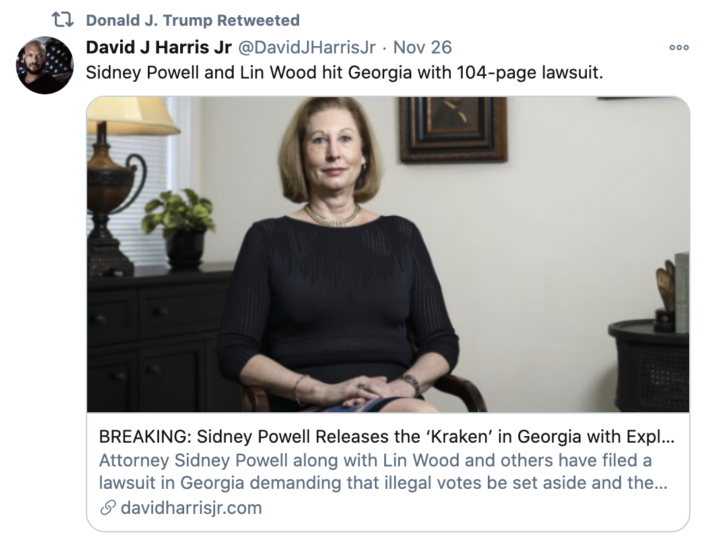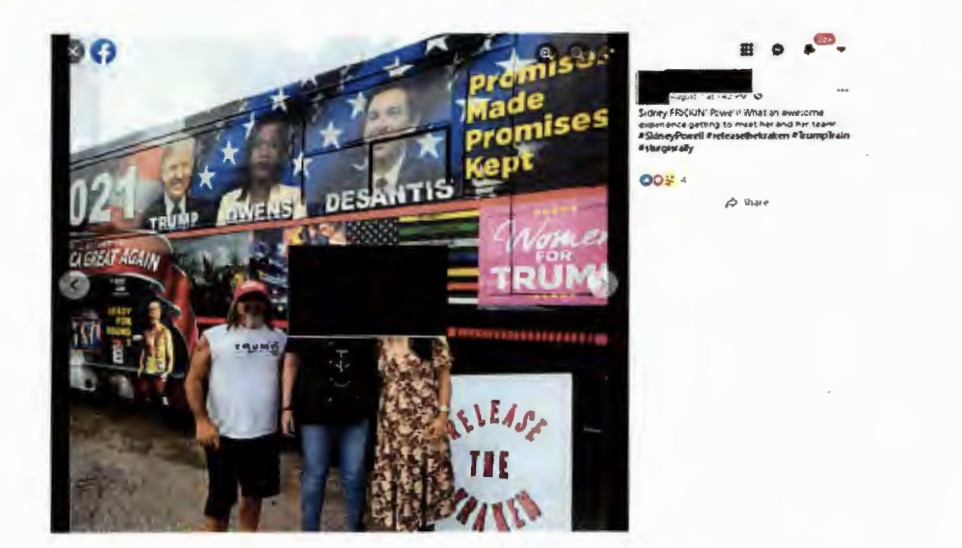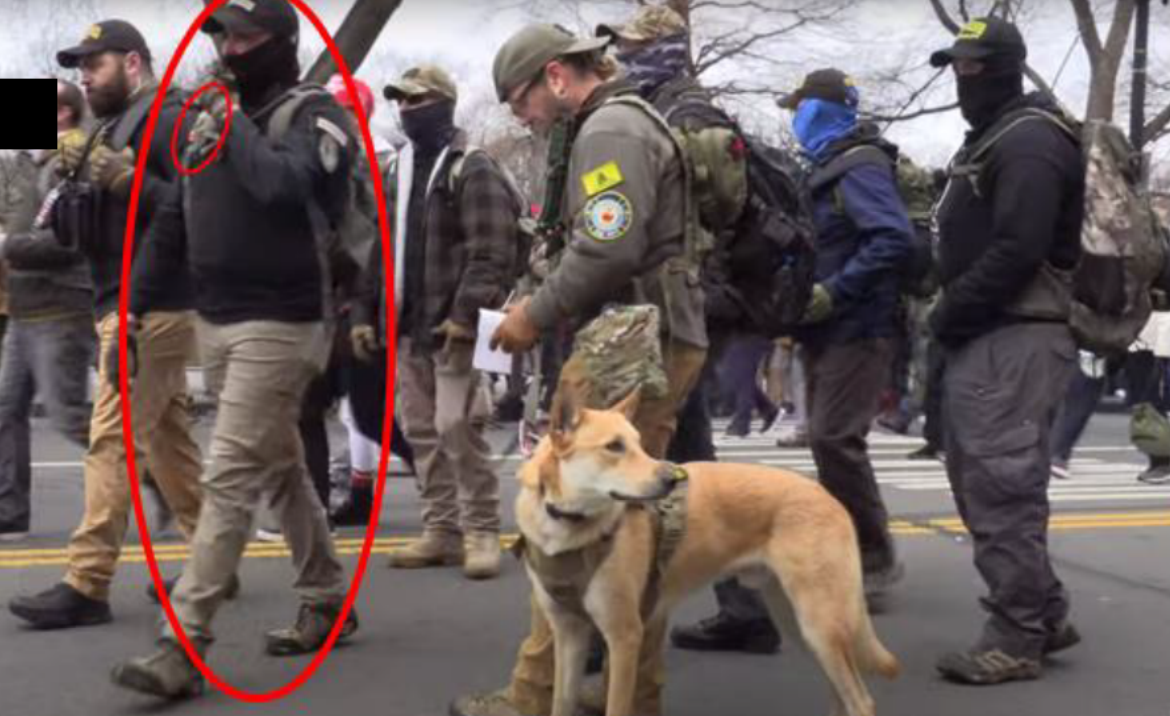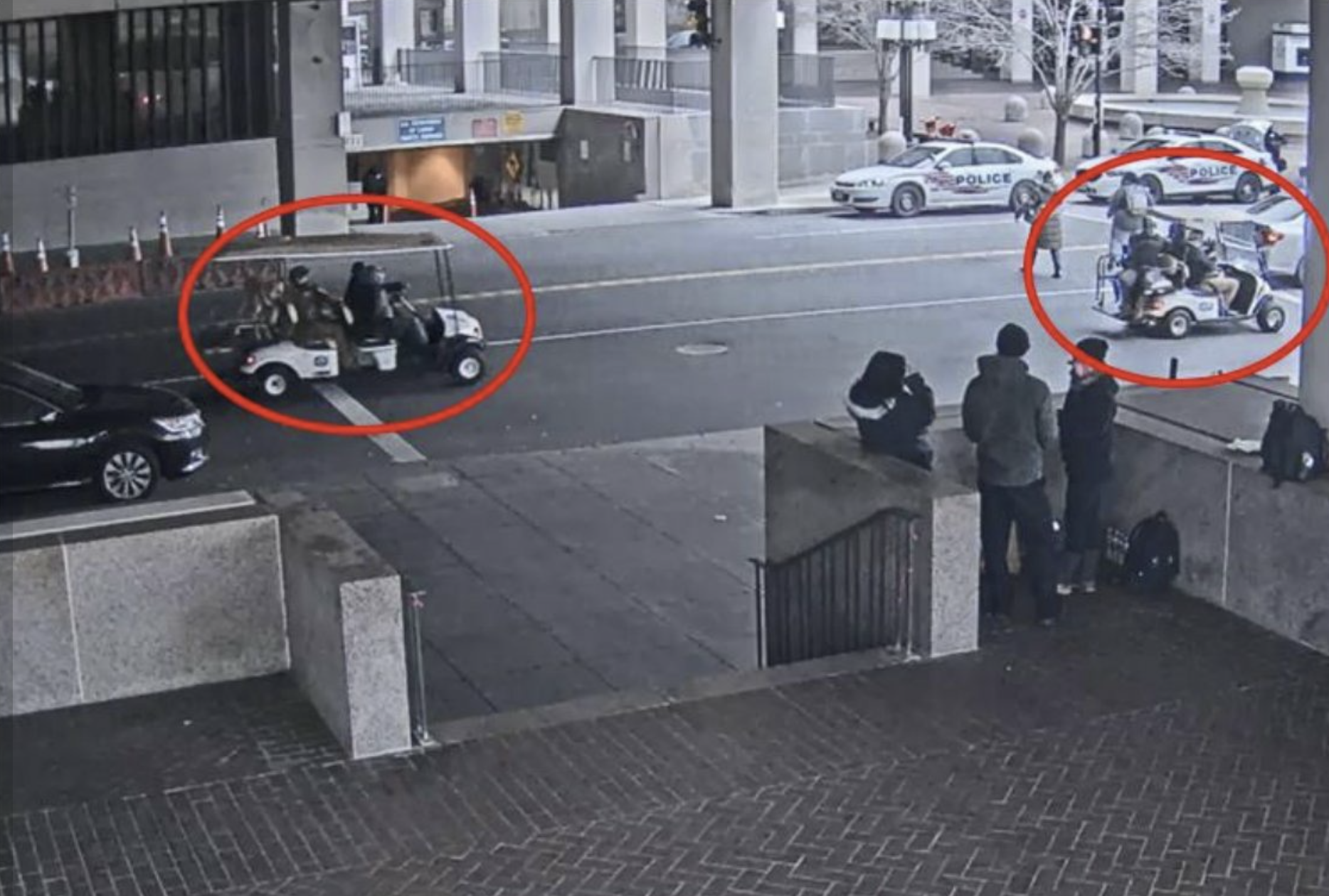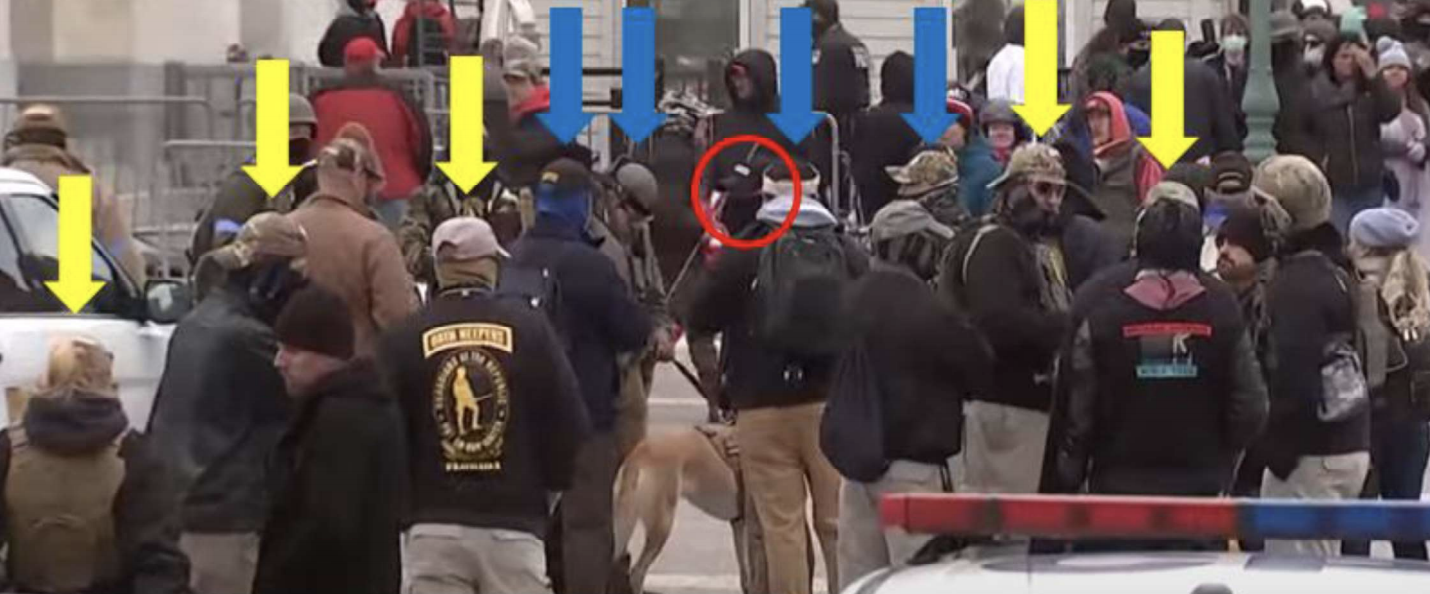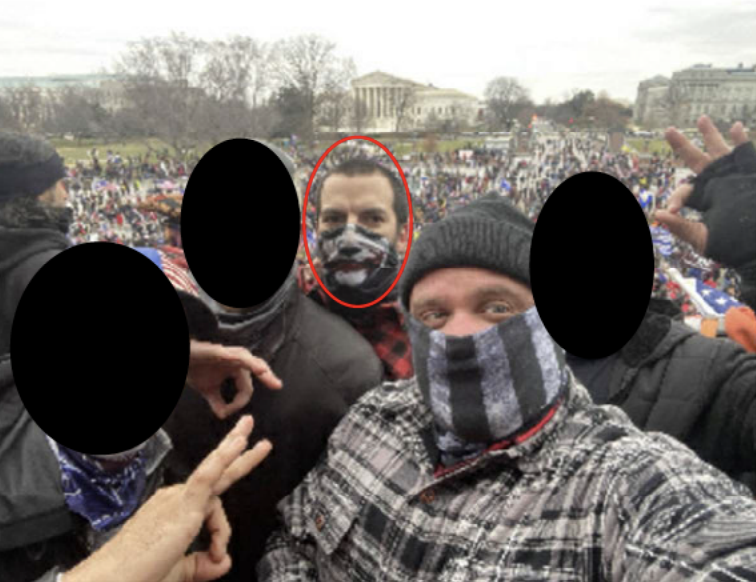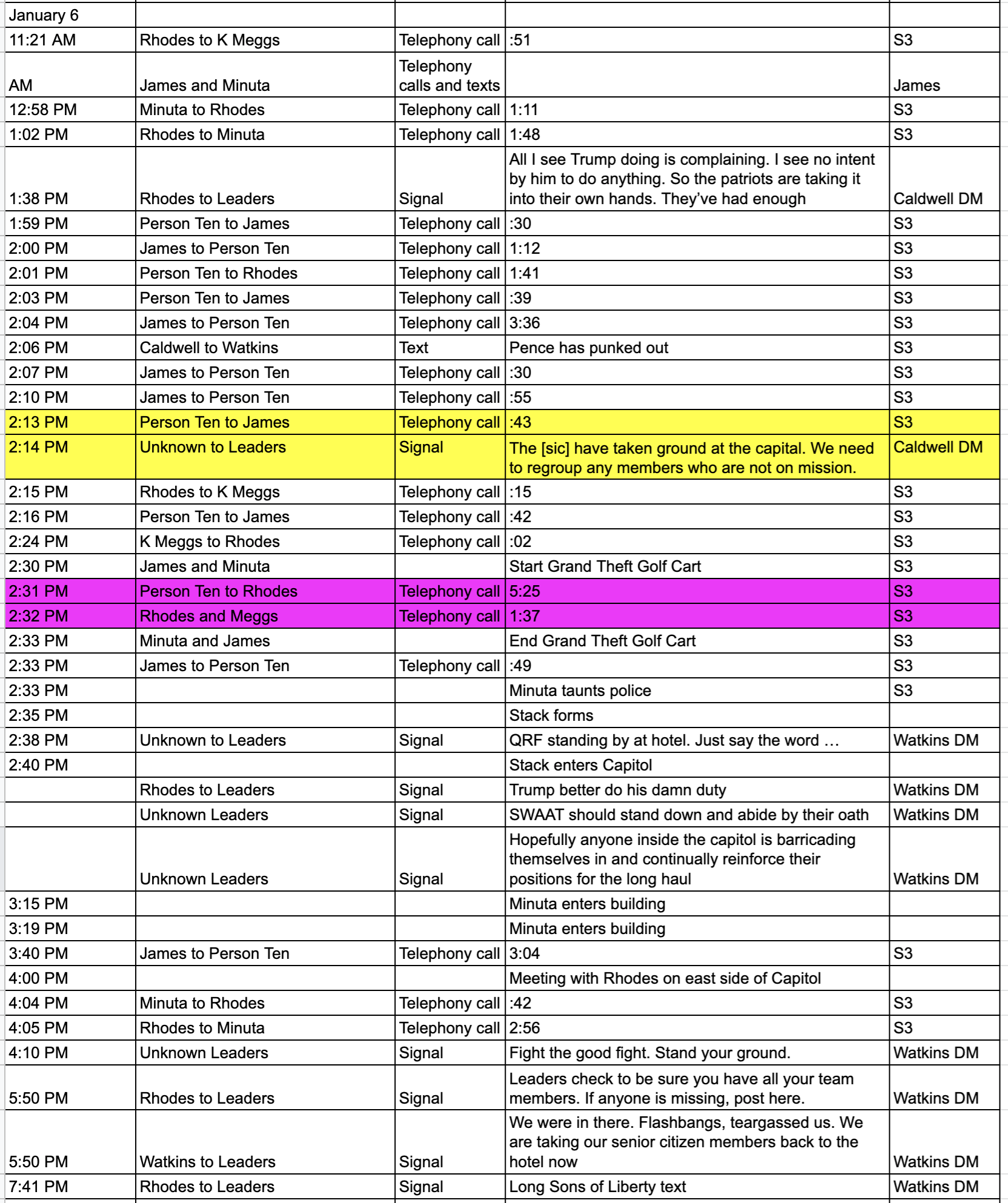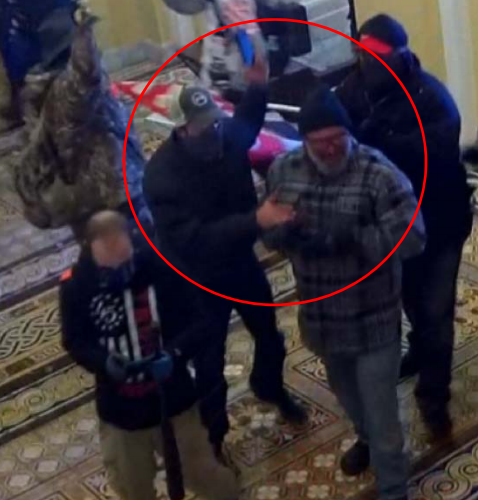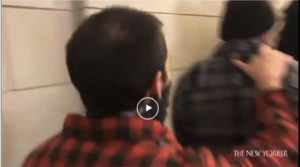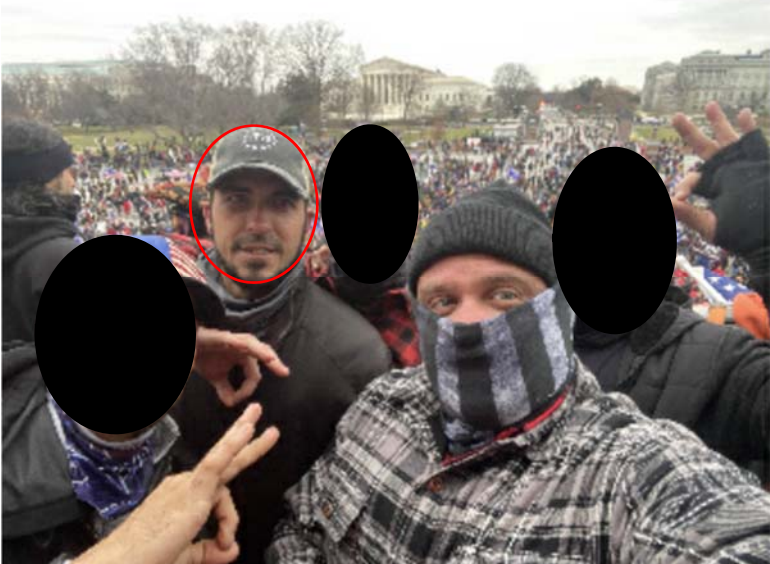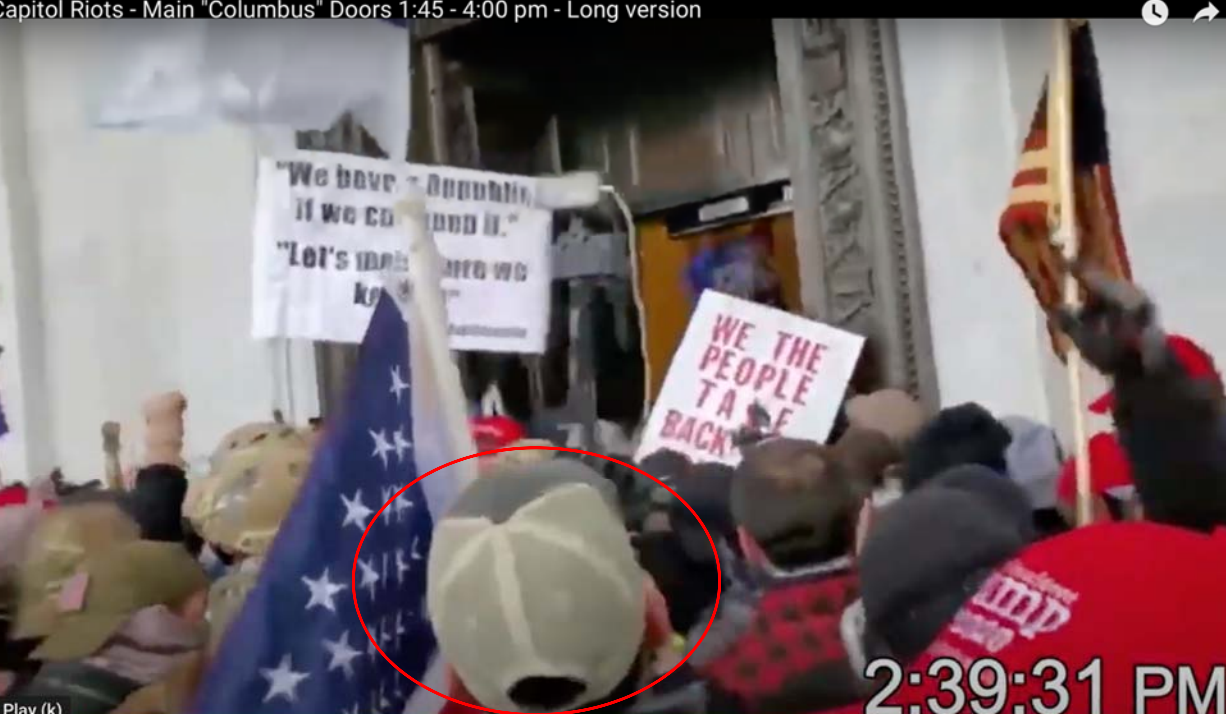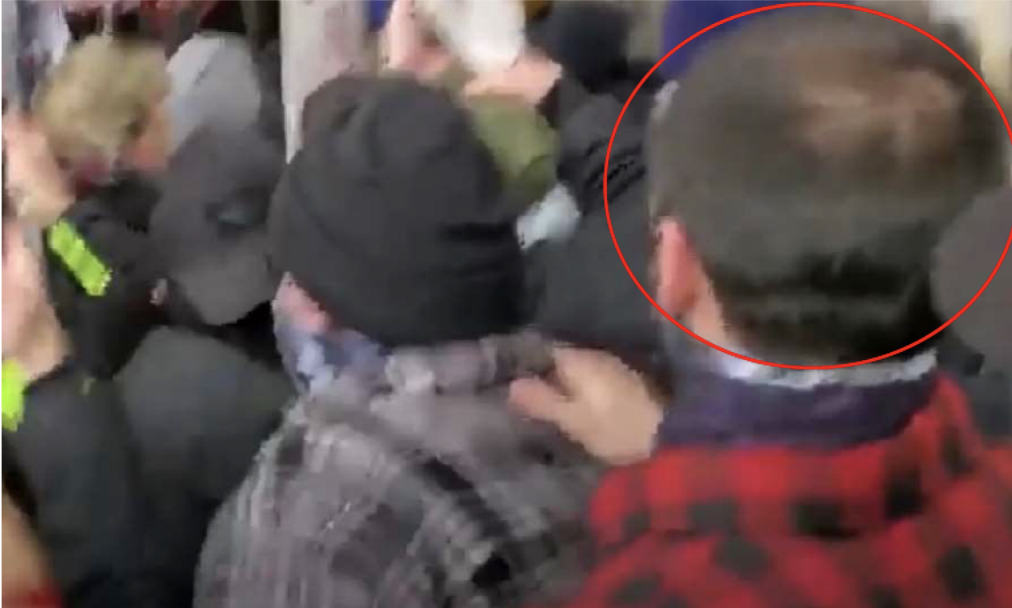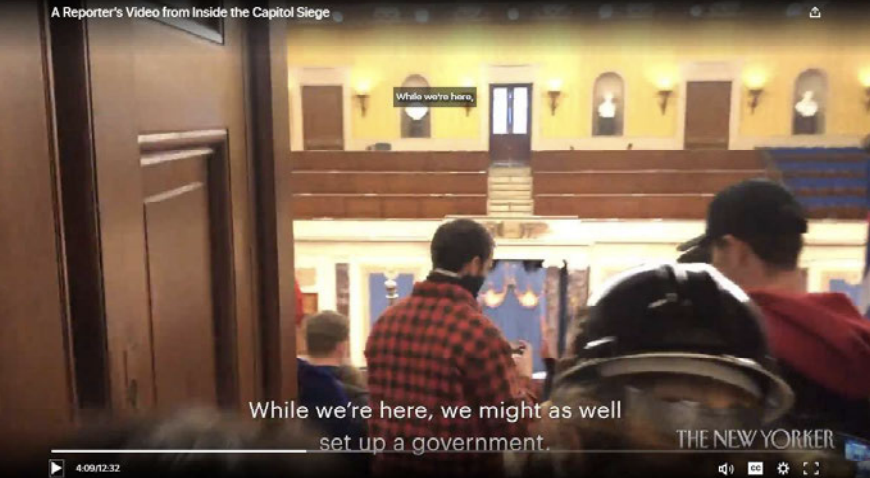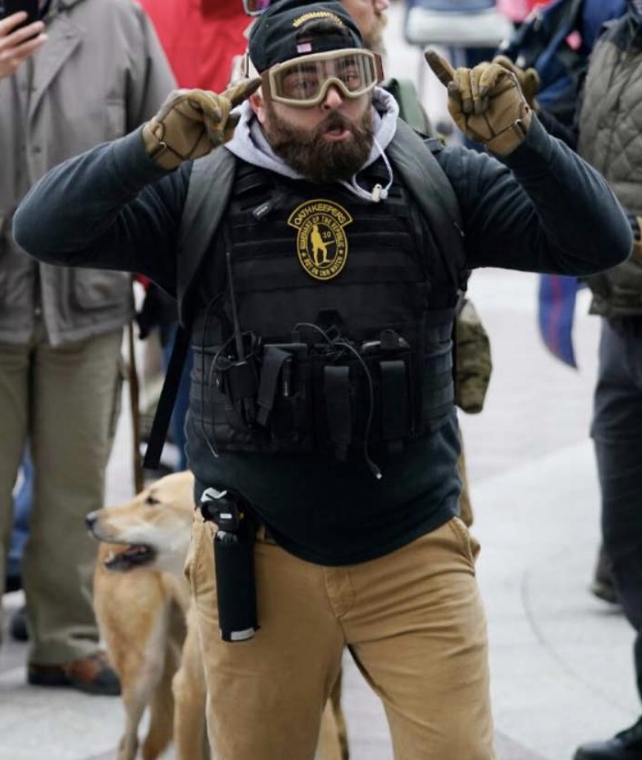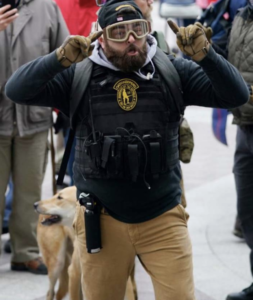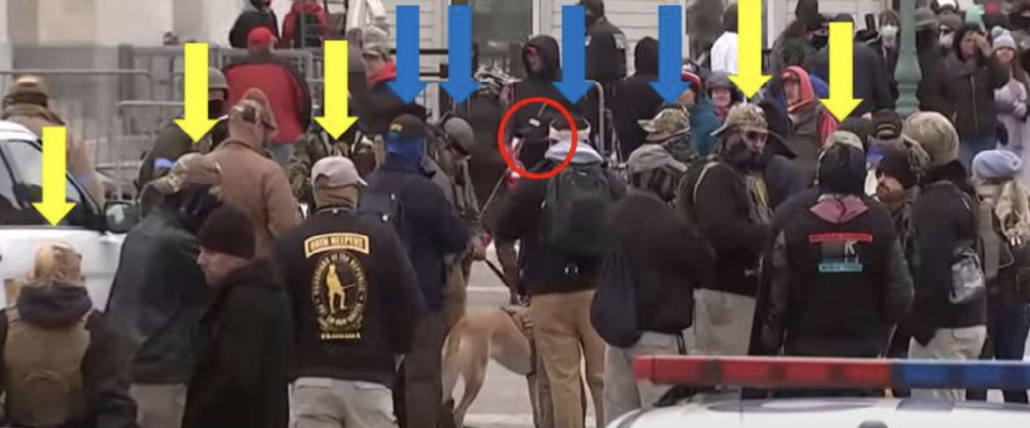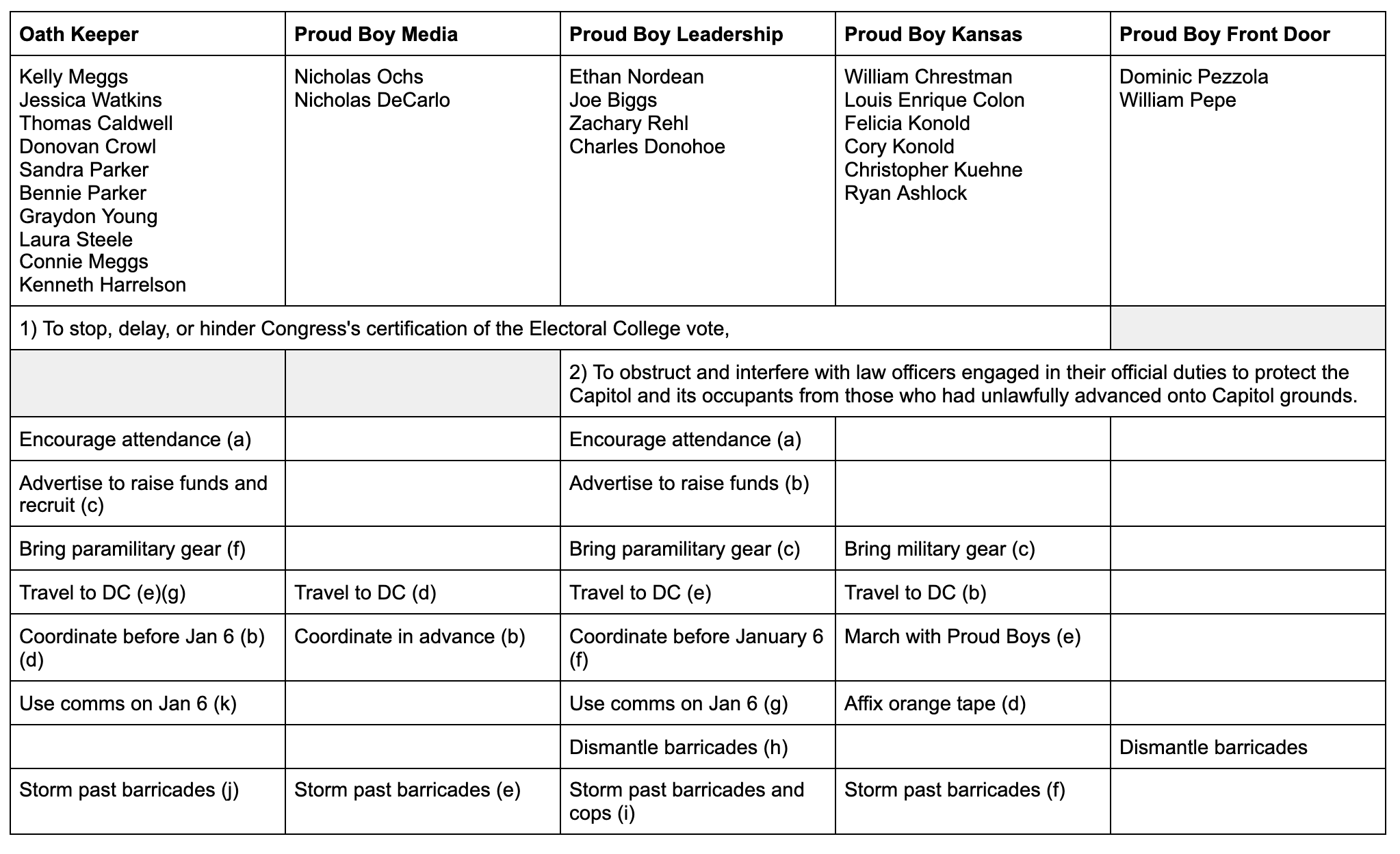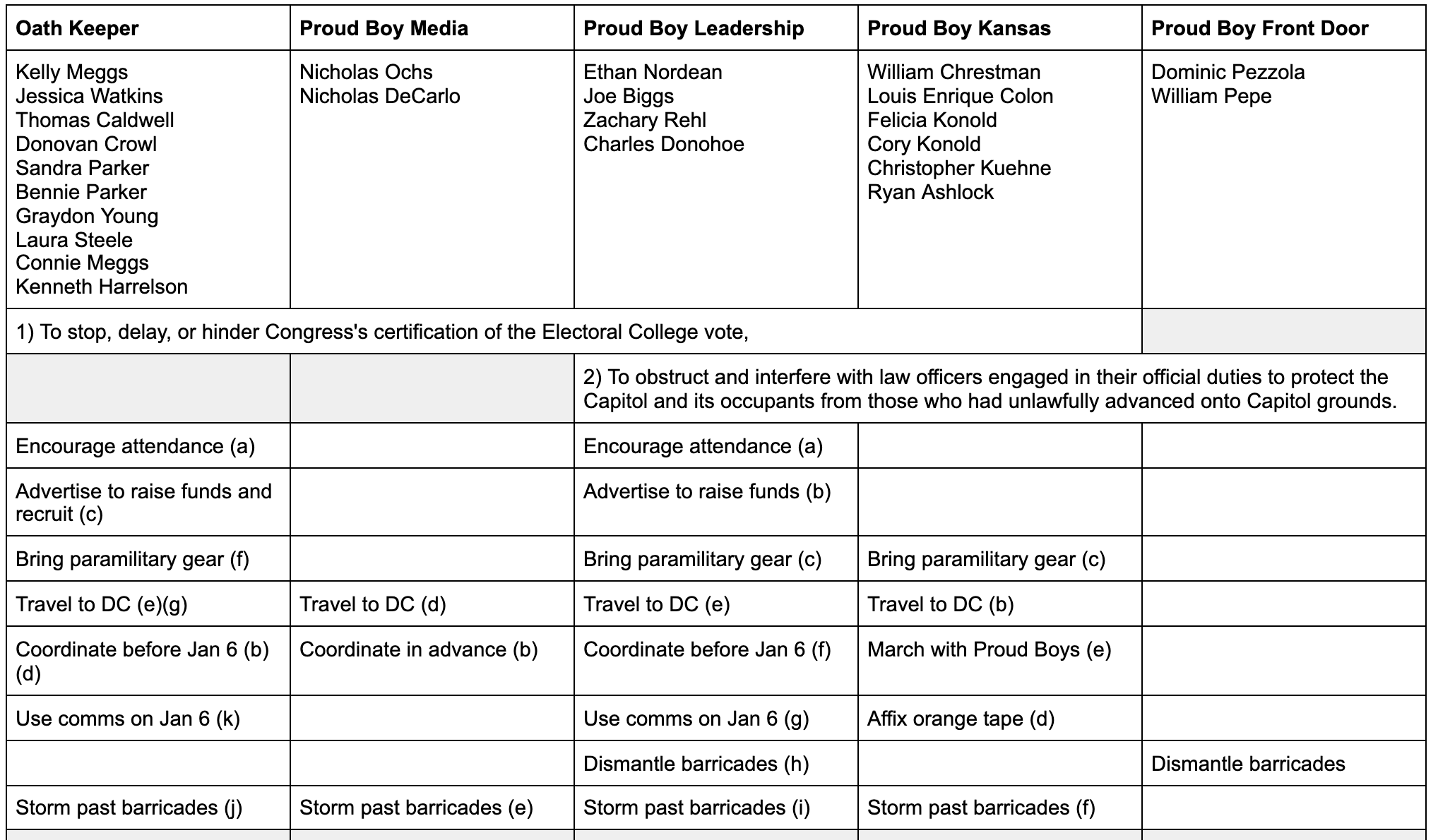When DOJ first unrolled the seditious conspiracy charges against Oath Keeper Stewart Rhodes and others on January 13, I noted that one goal of that indictment was to pressure those with the most important information to flip.
It worked.
Less than fifty days later, Joshua James pled guilty to seditious conspiracy and obstruction as part of a cooperation deal.
James’ statement of offense, as all statements of offense must, lays out the things DOJ would have used to prove not just the crimes charged, but the enhancements, which in James’ case includes the following for both the seditious conspiracy and obstruction charges:

Particularly because he’s the first to plead to the sedition charge, the government lays that out carefully, bookending the description of January 6 with an explanation of James’ intent both to obstruct the vote count and to attack the government.
James agreed to take part in a plan developed by Rhodes to stop the lawful transfer of presidential power by January 20, 2021, by deploying force to prevent, hinder, and delay the execution of the laws of the United States governing the transfer of presidential power. They used encrypted and private communications, equipped themselves with a variety of weapons, donned combat and tactical gear, and were prepared to answer Rhodes’s call to take up arms. James and others amassed firearms on the outskirts of Washington, D.C.—some distributed across hotels and “quick reaction force” (“QRF”) teams—and planned, if called upon, to use them in support of the plan to halt the lawful transfer of presidential power.
[snip]
In advance of and on January 6, 2021, James and others agreed to take part in the plan developed by Rhodes to use any means necessary, up to and including the use of force, to stop the lawful transfer of presidential power.
[snip]
James intended to use force and did, in fact, use force in the Capitol and when engaging in physical altercations with law enforcement, in order to prevent, hinder, and delay the execution of the laws governing the transfer of power. James corruptly obstructed, influenced, and impeded an official proceeding, that is, a proceeding before Congress, specifically, Congress’s certification of the Electoral College vote as set out in the Twelfth Amendment of the Constitution of the United States and 3 U.S.C. §§ 15-18.
In taking such actions, James intended to influence or affect the conduct of the United States government or to retaliate against the United States government. He accomplished this by intimidating and coercing government personnel who were participating in or supporting the Congressional proceeding, including Members of Congress, Congressional staff, and law enforcement officers with the Capitol Police and Metropolitan Police Department.
But much of the rest of the statement implicates others, making them more likely to plead, as well.
Most of the new detail in this statement describes actions of Stewart Rhodes, many of which James would be one of, or the only, witness to. That starts with the detail that, after James came out of the Capitol and then again days later, after Rhodes reviewed video of James’ fight with a cop, Rhodes expressed his approval of James’ actions.
After exiting the Capitol, James gathered with Rhodes and other co-conspirators approximately 100 feet from the Capitol, near the northeast corner of the building. Rhodes told James he was glad James and others had gone inside the Capitol.
[snip]
On January 8, 2021, James met with Rhodes and others at a restaurant in Alabama. There, James showed Rhodes a video of James’s physical altercation with law enforcement officers inside the Capitol on January 6, 2021.
DOJ will use this as evidence that Rhodes ratified the violence that James, at least, engaged in (and is proof that James always knew there was evidence of the confrontation with the cops, even though it took some time after James’ arrest for DOJ to find it).
There are a great many details in the statement about the immediate response after the riot. Almost immediately, it seems, Rhodes came to believe they were being pursued (DOJ is coy about whether he had reason to believe, which may prove interesting later). And so almost immediately, they left town.
At Rhodes’s instruction, James, Vallejo, and others met Rhodes that evening at a restaurant in Vienna, Virginia. Rhodes discussed saving “the Republic” by stopping the transfer of presidential power and began to make plans to oppose the Inauguration on January 20, 2021, including by having people open-carry firearms at state capitols around the country.
While at the restaurant, Rhodes and James came to believe that law enforcement was searching for Rhodes and others after their attack on the Capitol. The group immediately returned to their hotel, collected their belongings, and met at a nearby gas station. There, James saw what he estimated to be thousands of dollars’ worth of firearms, ammunition, and related equipment in Rhodes’s vehicle. Rhodes divvied up various firearms and other gear among James and others who occupied a total of three cars. Rhodes left his mobile phone with one person and departed with another person in that person’s car so that law enforcement could not locate and arrest him. The three cars departed in separate directions.
James returned to Alabama with some of Rhodes’s gear, including firearms and other tactical equipment.
This explains the behavior of some others, such as Graydon Young’s decision to drive back to Florida from his sister’s house in North Carolina rather than flying.
Rhodes continued to provide James orders to obscure his actions.
Rhodes expressed gratitude for James’s actions and told James to alter his physical appearance to conceal his identity.
[snip]
Rhodes gave James a burner phone—a cell phone used for concealing the identity of the user through a false registration and/or temporary use before discarding it for another cell phone. Rhodes instructed James to manufacture a false identity— including a false name and address—for the phone. James subsequently wrote the false name and address, “John Smith, 201 Oak Street, Albie, NE 68001,” along with a phone number and “Signal pin” on a sticky note placed inside the back of the phone’s battery case. Rhodes did not allow James and others to have their mobile phones powered on or nearby any time they discussed the Presidential Election and next steps.
But it wasn’t just Rhodes. One paragraph describes someone James “understood to be an attorney for the Oath Keepers” instructing them all to delete their communications. After this instruction, James in turn told Mark Grods and Brian Ulrich to delete their own communications.
On January 8, 2021, James received a Signal message, in a group chat that included Rhodes, from an individual he understood to be an attorney for the Oath Keepers that stated, “STEWART: YOU ALL NEED TO DELETE ANY OF YOUR COMMENTS REGARDING WHO DID WHAT. You are under zero obligation to leave them up. You/we have not yet gotten a preservation order instructing us to retain those chat comments. So DELETE THEM. I can’t delete them because this is a legacy Signal chat that doesn’t let me delete comments. Only the comment author can delete a comment. So GET BUSY. DELETE your self-incriminating comments or those that can incriminate others. Start now …”
Thereafter, on January 8, 2021, James forwarded to Grods the message from the attorney and instructed him to “make sure that all signal comms about the op has been deleted and burned.” James also messaged Ulrich on Signal and instructed him to delete messages with photographs that included their faces.
It’s unclear who this person is — Kelly SoRelle is one possibility. Whoever it is, DOJ has described this in such a way as to remain ambiguous about the lawyer’s actual role, which is important because, as part of the later investigation, DOJ got another Oath Keeper to disavow SoRelle’s role as an attorney (meaning they wouldn’t have to treat her communications as privileged). In any case, whoever this lawyer is, the person is now implicated in James, Grods, and Ulrich’s efforts to obstruct the investigation, and as such becomes a candidate to be charged as a co-conspirator him or herself.
The other actions implicating Rhodes serve to show that Rhodes and James (as well as Kelly Meggs, though the evidence against him is weaker), started pursuing sedition before January 6 and continued it even after the inauguration.
In advance of and on January 6, 2021, James and others agreed to take part in the plan developed by Rhodes to use any means necessary, up to and including the use of force, to stop the lawful transfer of presidential power.
[snip]
On January 8, 2021, James collected his firearms and Grods’s shotgun, and he traveled to Texas where he met and stayed with Rhodes and others to, in part, serve as Rhodes’s security and be prepared to carry out Rhodes’s next instructions. James remained with Rhodes in Texas until February 2021.
While with Rhodes in Texas, and before the Inauguration on January 20, 2021:
[snip]
b. James accompanied Rhodes on multiple trips where Rhodes purchased thousands of dollars’ worth of firearms and tactical equipment, including scopes, ammunition, magazines, bipods, duffel bags, holsters, and firearm-maintenance equipment.
c. While in a vehicle together, Rhodes gave James an AR-platform firearm and explained that Rhodes would not be taken by law enforcement without a fight. James understood Rhodes to be ordering him to help defend Rhodes against law enforcement with force in the event of an arrest.
[snip]
James departed Texas in February 2021. At Rhodes’s instruction, James took with him multiple firearms, thousands of rounds of ammunition, multiple burner phones, scopes, magazines, night-vision equipment, and other tactical gear. Rhodes told James to be prepared to transport and distribute the equipment to others upon Rhodes’s instruction and to be prepared for violence in the event of a civil war. James stored this equipment in a storage shed in Alabama and awaited Rhodes’s instructions.
In short, the first person DOJ got to flip after the sedition charges was probably the most important witness against Rhodes as the leader of a seditious conspiracy.
But it’s not just Rhodes endangered by James’ cooperation. DOJ has included new details about what happened to James’ and others’ guns (including that they remained at the Hilton Garden Inn in Vienna, rather than in the Ballston Comfort Inn) — the significance of which I laid out here.
James and others amassed firearms on the outskirts of Washington, D.C.—some distributed across hotels
[snip]
On January 4, 2021, James traveled with Ulrich, Grods, and others to the Washington, D.C., metropolitan area. James brought a semi-automatic handgun, and Ulrich, Grods, and others brought firearms, including a rifle, a shotgun, a semi-automatic handgun, and ammunition. James stored their firearms at the Virginia hotel where he, Rhodes, Minuta, and others had rooms.
The statement of offense makes it clear that James has told DOJ about his conversations during the riot with Mike Simmons (but not what they included).
Between 2:00 p.m. and 4:05 p.m., James exchanged multiple phone calls with the operation leader Rhodes had appointed for January 6.
The statement implicates Roberto Minuta directly in James’ violence.
At 3:16 p.m., while inside the Capitol lobby outside the Rotunda, James asked Minuta, “Want to keep pushing in?” Minuta responded, “yup.” James then pushed toward the Rotunda, yelling, “Keep fucking going!”
[snip]
Other members of the mob, including Minuta, began pushing James forward into the Rotunda while James yelled, “Keep going!” James and Minuta breached the Capitol Rotunda, and then James was expelled by at least one officer who aimed chemical spray directly at James. Multiple officers pushed James out from behind.
And in a really interesting passage, the statement describes planning that happened on November 14 and 15 in the DC area and VA.
On November 14 and 15, 2020, James met with Rhodes and others in the Washington, D.C., metropolitan area and at Caldwell’s Virginia farmhouse and learned about the start of their plans to oppose by force the lawful transfer of presidential power.
As WO noted yesterday, there may have been an earlier reference to Thomas Caldwell removed in this draft (in which his first name was used), which might have described some reconnaissance Caldwell did on or before November 9, as described in the indictment. The November 14 planning is important, however, because it suggests broader coordination with “others” at the MAGA March. It may reflect Jon Schaffer’s cooperation; his arrest affidavit is one of the few, among all January 6 defendants, that mentions that march. DOJ now has a witness to that planning.
Perhaps the most interesting detail of the statement describes a plan to report to White House grounds and secure the perimeter.
In the weeks leading up to January 6, 2021, Rhodes instructed James and other coconspirators to be prepared, if called upon, to report to the White House grounds to secure the perimeter and use lethal force if necessary against anyone who tried to remove President Trump from the White House, including the National Guard or other government actors who might be sent to remove President Trump as a result of the Presidential Election.
The “if called upon” language reflects some of what we’ve seen in Rhodes’ (and the Oath Keepers’) ideology generally — that they believed they would become a legal militia once the President called on them. It reflects the contingent nature of the preparedness, something Rhodes has already tried to use to undercut the charges. But it also raises questions about why James and others, after having “provided security” for Roger Stone at the Willard the morning of the riot, hung around the Mayflower Hotel until the Capitol was breached. That is, they may have remained close to the White House that day until Rhodes decided there were more immediate objectives. All of which makes me more interested in whether the Oath Keepers brought weapons into DC that day.
Finally, there are the interesting details that aren’t in this statement, but which surely are key aspects of James’ cooperation. As noted above, the statement describes James’ contacts with Mike Simmons after 2:00PM. But we know those communications started earlier, at least by 10:06AM, when James was with Roger Stone.


Then there’s a comment from the indictment that doesn’t show up in this statement, in which James shares his opinion with “another individual” that Joe Biden’s inauguration would lead to “Civil War 2.0.”
On Inauguration Day, January 20, 2021, JAMES messaged another individual, “After this .. .if nothing happens .. .its war … Civil War 2.0.”
This statement has far more details showing that James was taking steps to prepare for such a civil war. But this detail of reflecting intent doesn’t appear in it.
Which is to say, there’s a lot here for Stewart Rhodes and others to see, to entice them to follow James’ lead in pleading.
But there’s a lot left unsaid to make others worry.

